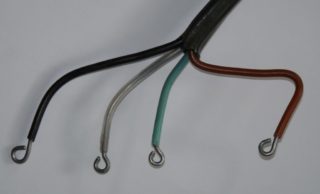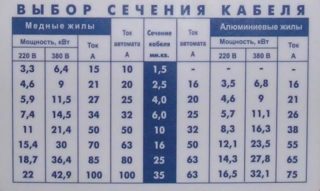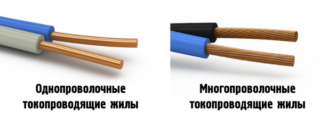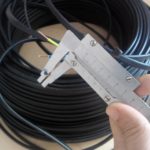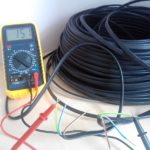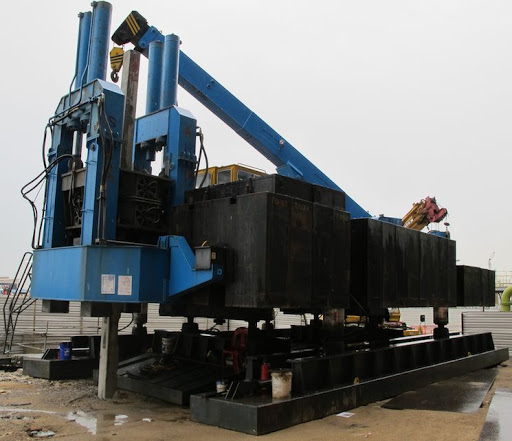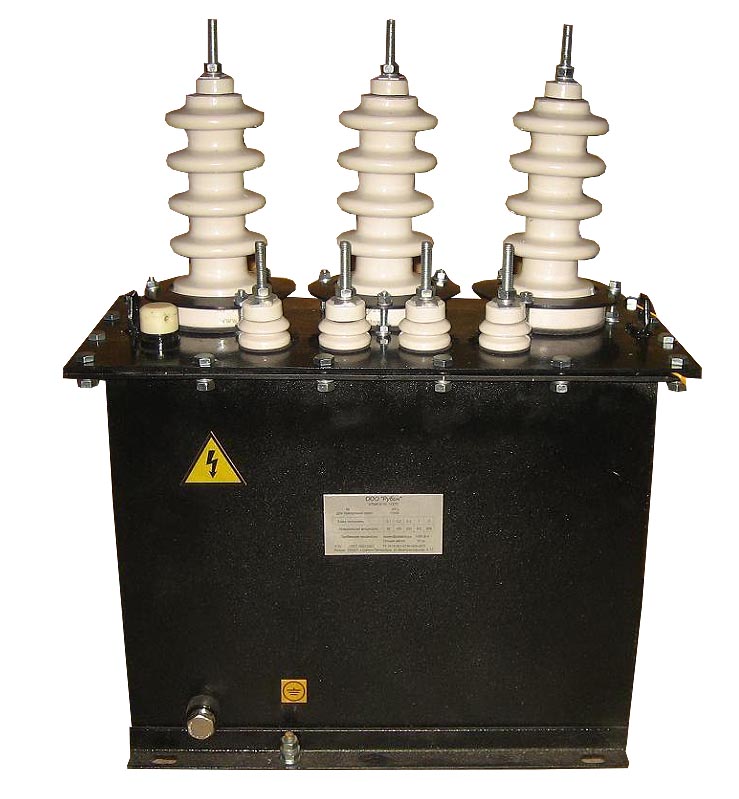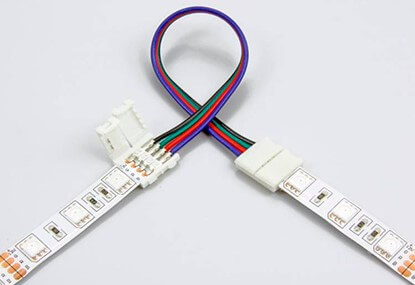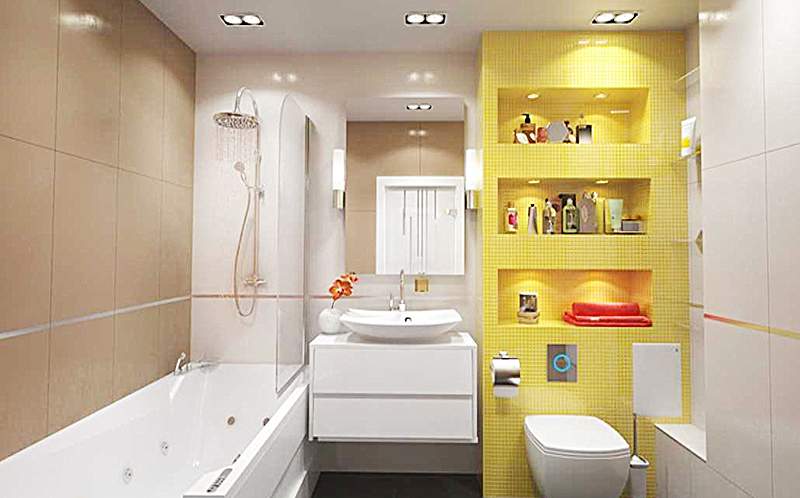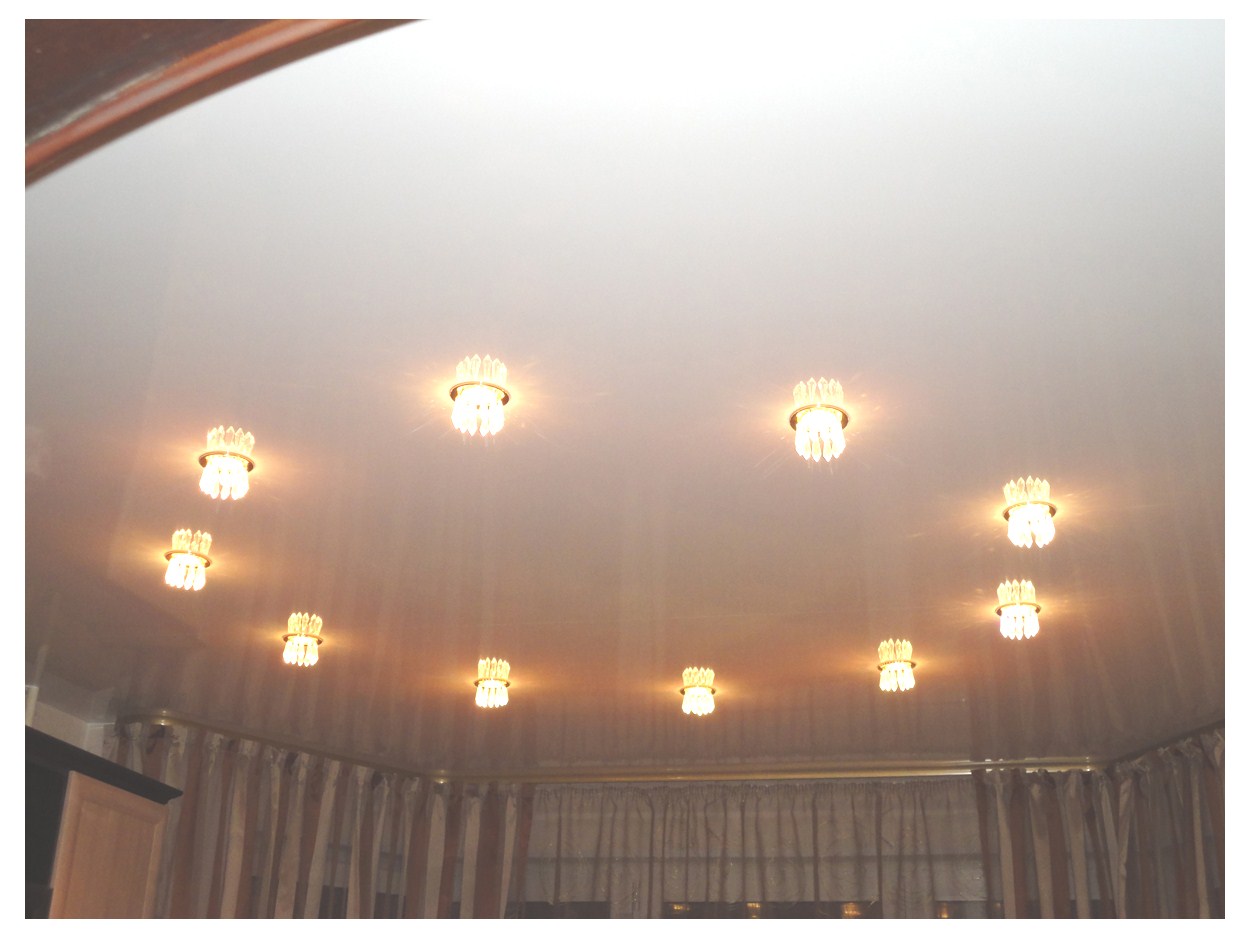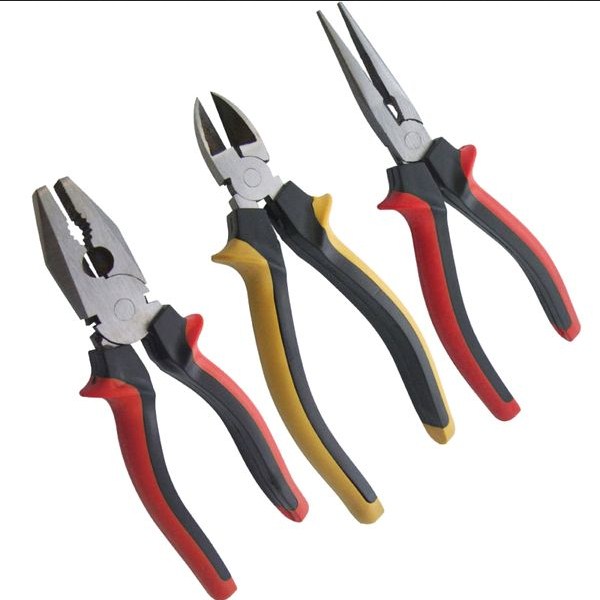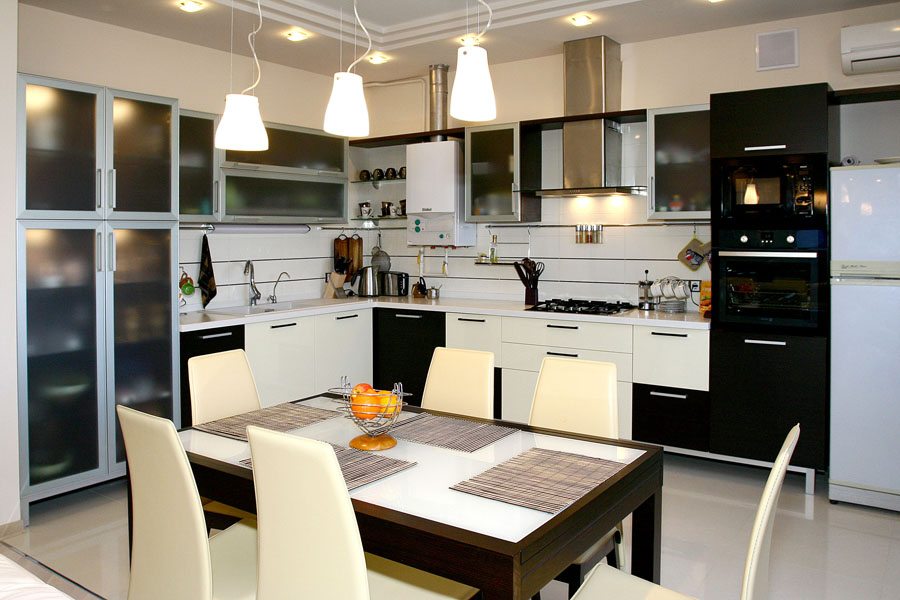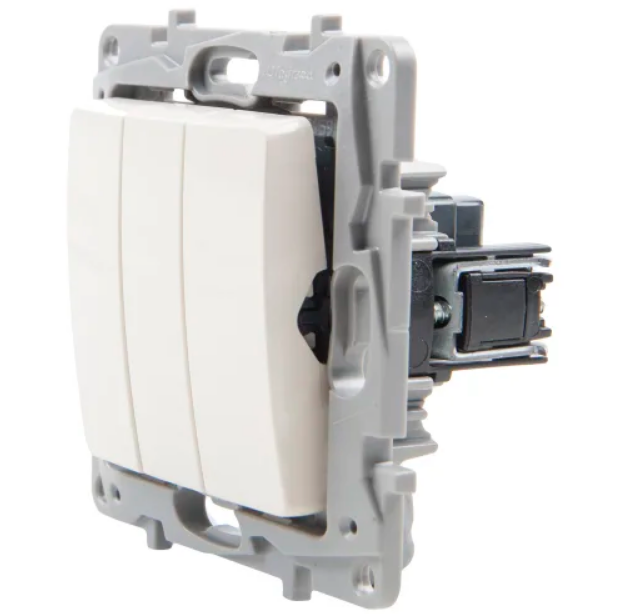When designing a major overhaul, you need to know exactly what wire cross-section is needed for outlets in an apartment. The comfort and safety of living in the house depends on the correctness of the decision made and its practical implementation. A wide selection of electrical cables of various classes and purposes is on sale. Products have certain characteristics that determine the scope of their application. When choosing a product, several factors must be taken into account, among which quality is in the first place.
- What conductor to use for arranging electrical wiring in the apartment
- What type and brand of conductor to choose for the outlet
- Calculation of the future load
- Power conductor calculation
- Calculation of the cross-section of the veins
- Cross-section of the lead-in cable to the apartment
- Cable cross-section for sockets
- Cross-section of wires for lighting
- Choice of solid or stranded cable
- How to distinguish a high-quality cable from a low-quality one
What conductor to use for arranging electrical wiring in the apartment
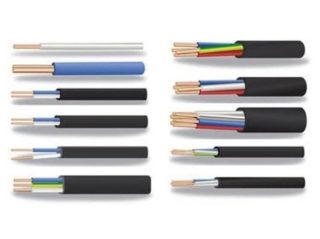
In most of the houses built in the middle to the end of the last century, the entrances and internal communications were made of aluminum. This metal was preferred due to its low cost, which was of decisive importance in the conditions of mass construction on a national scale. Subsequently, this decision played its evil role, thanks to the numerous disadvantages of aluminum.
The most unpleasant properties of metal:
- Brittleness. The veins break after 2-3 bends. This phenomenon has to be dealt with in the process of frequent replacement of switches and sockets.
- Low electrical conductivity. This often leads to heating of the line and melting of the insulation. The occurrence of fires for this reason is not uncommon.
- Oxidation. Over time, a film with dielectric properties appears on the metal surface. Because of this, the connections in the contacts and twists lose their electrical conductivity. Over time, contact may disappear altogether.
The advantage of aluminum is that it is flexible and malleable. The wire can be shaped to any shape, which is convenient for installation.
In accordance with the changes in GOST, since 2001, the use of aluminum in residential construction is prohibited. Priority is given to a copper cable with an earthing conductor. The price of such products is several times higher than that of aluminum, but the investment is justified by the high performance characteristics of the metal.
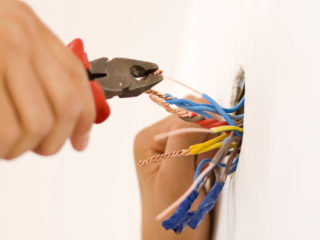
Advantages of copper:
- Elasticity. The wires can be bent and twisted up to 100 times before they break.
- Durability. Copper does not change its characteristics throughout the entire period of operation of the building, which is 50-100 years.
- Excellent electrical conductivity. This allows the use of a smaller conductor cross-section, which has a positive effect on the product price.
- Flexibility. This quality helps to pull cables through narrow channels, without resorting to chipping the walls.
In addition to the high cost, the metal has one drawback - it oxidizes and becomes covered with a patina that does not conduct electricity well. The occurrence of this phenomenon can be prevented in advance by soldering the contacts with tin.
Thus, when choosing a cable for sockets in an apartment, you need to stop your choice on products with copper conductors.
What type and brand of conductor to choose for the outlet
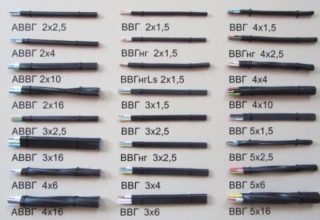
When choosing a cable for sockets, it is necessary to take into account their number in each room and the power of the packet switch at the entrance. In all cases, it is necessary to focus on the maximum load that will be applied to each point. In addition, you need to remember about the safety factor. This is the material from which the cable insulation is made. Depending on the model, when heated, it can emit substances of varying degrees of toxicity. This topic is especially relevant for bedrooms and children's rooms.
For the equipment of premises, products of the following brands can be used:
- VVG - double insulation made of polyvinyl chloride. The plastic is flammable, flammable, does not extinguish on its own. Recommended for use in fire-safe rooms.
- VVGng - insulation with double protection, the basis of which is non-flammable PVC, capable of self-extinguishing after exposure to an open flame. Can be used in both brick and wooden houses.
- VVGng-LS - wires with double protection made of halogen-free polyvinyl chloride, which does not emit smoke when heated and in contact with fire. Allowed to be installed in medical and preschool institutions.
- NYM- (N). A German-made product, which is of high quality and combines all the advantages of domestic products. In case of fire, the insulation does not burn, does not smoke, maintaining integrity and tightness. It is used without restrictions, including in rooms where explosive substances are stored.
In accordance with the requirements of SNiP, it is recommended to use copper wires with a cross section of 2.5 mm² for internal wiring to sockets in an apartment. The rated power of such a product is 6 kW at a current strength of up to 28 A. When using jacks with appropriate indicators, almost all household appliances and appliances on sale can be connected to the internal network. To avoid overloading the line and individual points, you should install an automatic machine with a capacity of up to 25 A.
When choosing a wire cross-section for sockets, one must not forget about the number of cores in the cable. Regardless of the type of entrance to the apartment, you should choose products with grounding. If a ground line is installed in the house, then you will not have to change the wiring to connect to the new conductor.
Calculation of the future load
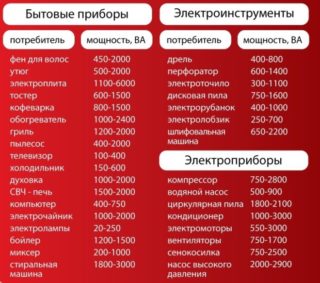
To determine what cross-sectional wires are needed for outlets, you need to calculate the load that they will take with the maximum number of connected consumers.
The following data are taken into account (in watts):
- air conditioner - 1000;
- water heater - 1200-1500;
- dishwasher - 1000;
- oven - 1200;
- iron - 1800;
- electric kettle - 2200;
- washing machine - 1500;
- vacuum cleaner - 1400-1700;
- computer - 500;
- perforator - 1300;
- grinder - 800;
- hair dryer - 1000;
- fireplace - 2000;
- flow heater for water - 5000.
Other devices, including lighting, can be neglected, since they do not significantly affect the load level.
The peak of consumption is observed in summer and winter, when heaters, air conditioners and washing equipment work at the same time. The total load on one outlet can be up to 4.5 kW, and for an apartment as a whole - up to 12-15 kW. Based on this, you need to select the cross section and type of wires.
Power conductor calculation
It is recommended to use the following models for connecting groups of consumers by power:
- VVG 3 × 2.5 mm² - for consumers with power up to 2200 W: small household appliances, washing machines and dishwashers, air conditioners and boilers, hand construction tools;
- VVG 5 × 2.5 mm² - for high power consumers over 2000 W: instantaneous water heaters, ovens, heat guns, welding machines, electric motors;
- VVG 2-3 × 1.5 mm² - for small household appliances and tools: floor fans, floor lamps, sconces, perforators, top and side lights.
When choosing wiring, you need to remember that a good thin cable can withstand short-term increased load up to 30 minutes without any problems. This allows powerful consumers (vacuum cleaner, tools, compressors) to be connected to sockets with 1.5 mm² lead wires.
Calculation of the cross-section of the veins
Cross-section of the lead-in cable to the apartment
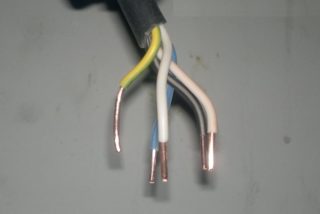
When calculating the diameter of the conductors of the input cable, it is necessary to mathematically calculate how many consumers can be connected to the line at the same time and their total power. If we take the ability of a copper wire to transmit 2.4 kW per 1 mm² without losing its characteristics, it is not difficult to obtain the required result. If the limiting design consumption is 12 kW, the minimum permissible cross-section is 5 mm². For peak loads, it is better to increase it slightly and stop at 6 mm². Then you need to route the cables from the meter to rooms. The calculation is carried out in a similar way. The recommended dimension is 4 mm² up to the mounting boxes. Such wires are guaranteed to withstand up to 12 kW of load in one separate room.
Cable cross-section for sockets
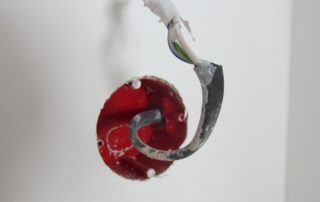
The safe operation of housing and the convenience of living in it depend on the correct choice of the cross-section of wires for outlets. Standard household sockets are designed for a maximum cross-section of the conductors connected to them 2.5 mm. This parameter is due to the limitations that are inherent in the house line. It simply will not stand if all consumers simultaneously use 10-15 kW in each apartment. Exceeding the permissible load will lead to burnout of contacts, melting of insulation or failure of the common transformer.
For the kitchen and bathroom, you need to choose wires with a cross section of 2.5 mm, since the most powerful consumers are located in these rooms. For the living room, nursery and bedroom, a line with 1.5-2 mm cores is sufficient. This is enough to connect fireplaces, air conditioners and other household appliances.
Cross-section of wires for lighting
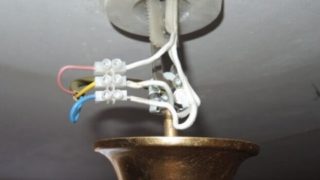
The choice of material for arranging lighting systems is based on the types of lamps that will be used for this. If these are halogen or spiral products, it is worth taking care of sufficient wiring power. But even if a lamp is installed with 10 horns of 100 W each, the total power of the structure will not exceed 1 kW.
Today, few people use incandescent lamps, switching to LED crystals, which, with the same glow brightness, consume 6-10 times less energy. Based on this, a cable with wires of 0.5-1 mm is enough to install the lighting system. Anything thicker will be a reassurance and a waste of money.
Choice of solid or stranded cable
Stranded wire is easier to work with. It is flexible, strong and resilient, easily dragged into the most difficult cavities. The downside is that the cross-section of the threads is gradually reduced due to the oxidation of their walls. Over time, the patina can take up up to 50% of the material, which will reduce the power and capacity of the line.
How to distinguish a high-quality cable from a low-quality one
A wide range of electrical cushioning products is available at home improvement stores. It is difficult to understand it, but possible.
You can distinguish a high-quality cable from a low-quality one by the following features:
- Availability of a certificate.For the original product there are accompanying papers with information about the manufacturer and a copy of the quality certificate.
- Compliance with technical requirements. If a product has a GOST mark, it complies with international standards. TU are local standards that can be very far from those accepted in the country.
- The color and degree of hardness of the core. High-quality electrical copper has a uniform color and bends well. Counterfeit is heterogeneous and fragile.
- Section size. It is checked by mechanical or electronic devices.
- Insulation condition. It should be flat, dense and free of mechanical damage, easily detachable from the metal.
- Reaction to fire. Quality insulation darkens, hardens and cracks. In a fake, it melts, stretches, burns and smokes.
Last but not least, you need to pay attention to the labeling of the cable. It should be applied in a clear and even font indicating the brand, the name of the manufacturer, the designation of the standard and the year of issue.

